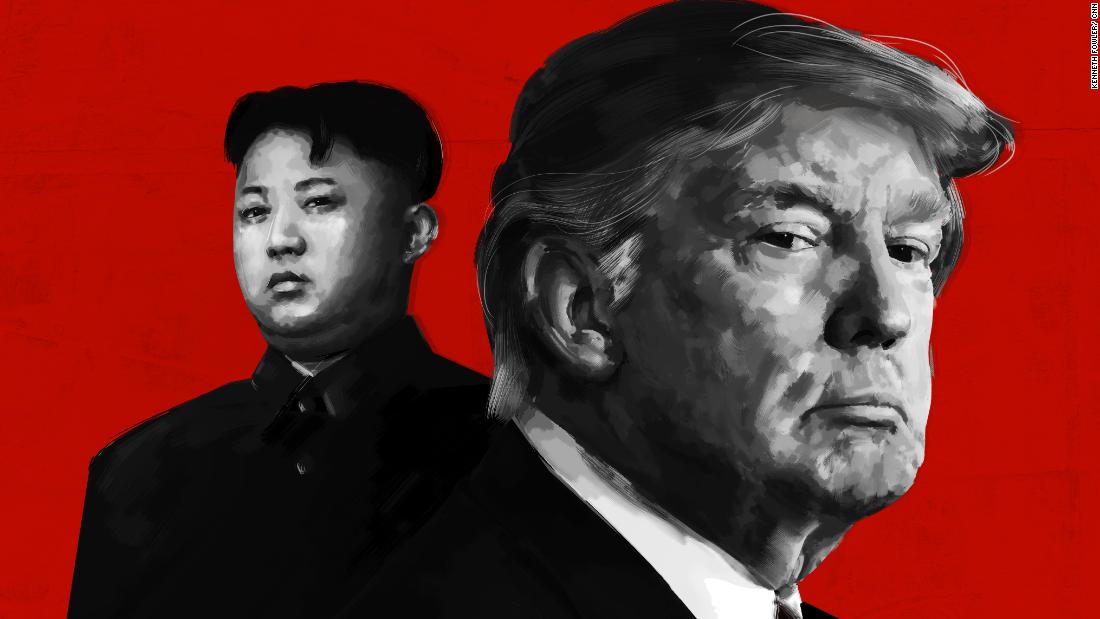[ad_1]
The last time the two sides were scheduled to meet, the North Koreans never materialized and Trump scrapped the summit. Aides are cautiously optimistic this time will be different, even as they continue to express private misgivings about the compressed timeline to arrange the meeting.
The results of this week’s parallel talks are likely to dictate whether the June 12 summit between Trump and Kim is possible, according to a US official familiar with the ongoing deliberations. The teams, led by seasoned American officials, hope to determine what Kim is willing to agree to should he meet with Trump next month.
Higher-level talks could also occur before the summit, the official said, including further discussions between Secretary of State Mike Pompeo and top North Korean officials, including possibly Kim.
A diplomatic victory?
Top Trump aides, including national security adviser John Bolton, have told the President that even a cursory meeting with Kim would amount to a diplomatic victory and allow for more substantive talks to occur in the future.
“Our United States team has arrived in North Korea to make arrangements for the Summit between Kim Jong Un and myself,” Trump tweeted on Sunday evening. “I truly believe North Korea has brilliant potential and will be a great economic and financial Nation one day. Kim Jong Un agrees with me on this. It will happen!”
On Monday morning, Trump discussed the summit with Japanese Prime Minister Shinzo Abe, who has encouraged maintaining firm pressure on North Korea until agreements over its nuclear and missile programs can be reached. Abe previously conferred with Trump at his Mar-a-Lago estate last month; the two men agreed to meet again before the possible June 12 summit.
On Sunday, current US ambassador to the Philippines Sung Kim led a team to the northern side of the “Unification House” along the DMZ for talks on North Korea’s nuclear program. The goal of the preliminary meetings includes drafting a communiqué for both leaders to approve at their historic meeting, the US official said.
Until this point, it’s been unclear whether Kim is willing to agree to a timetable for abandoning his nuclear weapons program and what demands he will have for the United States in return. Previous talks between US and North Korean officials — including two meetings between Kim and Pompeo — have failed to yield clarity on the denuclearization issue.
But as the clock ticks toward June 12, Trump’s aides are describing a renewed sense of urgency to make progress that would allow the two leaders to meet on schedule. Analysts said the pressure from the top makes a meeting more likely.
“When the senior leaders are basically saying move forward, and that’s their message to their working groups, I think there’s a good chance” the meeting happens, said John Park, director of the Korea Working Group at Harvard’s Kennedy School, who added the most plausible outcome from the talks would be an agreed-upon plan for North Korea to address its nuclear program.
“It’s really going to be the unveiling of a pre-prepared joint declaration, and I think that’s the official launch of this denuclearization mechanism,” Park said.
Details remain in question
The details of such a plan, however, remain in question. US officials said the most likely document would provide a framework for future negotiations, without going into great detail about what North Korea might be willing to give up or what steps the United States would take in exchange.
Instead, those details would be hammered out at the working level in the months and years to come. A similar, painstaking process yielded the Iran nuclear deal which Trump derided and withdrew from last month.
“I think it will basically be a meet and greet and grin and shake hands, and each leader can congratulate themselves. But that’s not all bad,” said Max Baucus, a former Democratic senator from Montana who also served as US Ambassador to China from 2014 to 2017. “It’s good that the two will meet, and my hope is that would set the stage for more realistic, more direct, specific conversations later on.”
In Singapore, a large advance team led by deputy White House chief of staff Joe Hagin arrived late Monday to begin logistical preparations for a summit. Teams had already been surveying hotel ballrooms and other possible locations for the meeting when Trump declared it canceled last week.
Chief among his concerns, according to US officials familiar with the discussions, are Kim’s security needs in Singapore, including the number of bodyguards he’ll be allowed to bring to the meeting with Trump. Also under discussion are the composition of delegations from each side, and the level of press access to the summit should it occur.
Those details were supposed to have been worked out two weeks ago, when Hagin traveled to Singapore to arrange details of the talks, but the North Korean delegation never arrived.
[ad_2]
Source link

